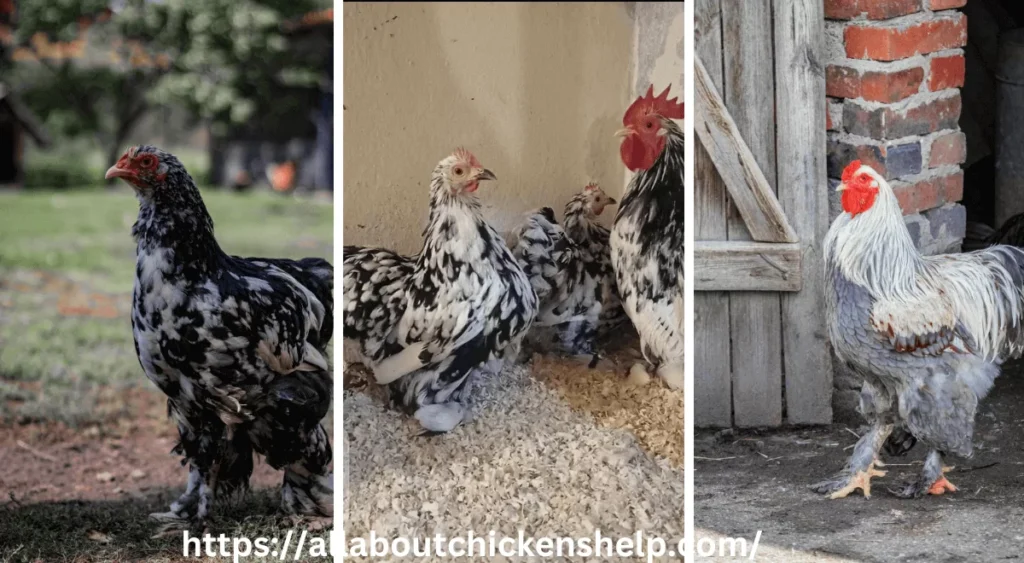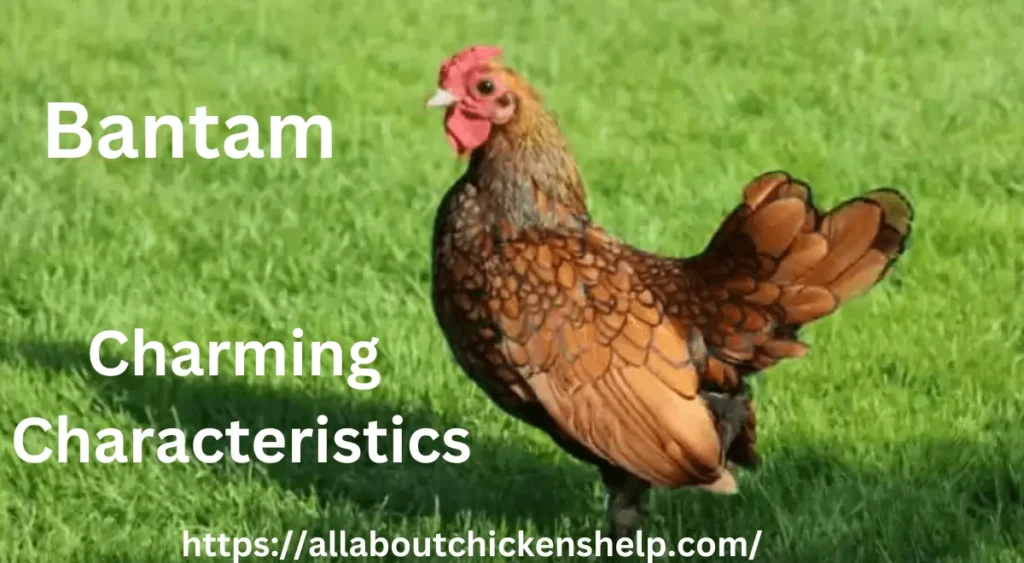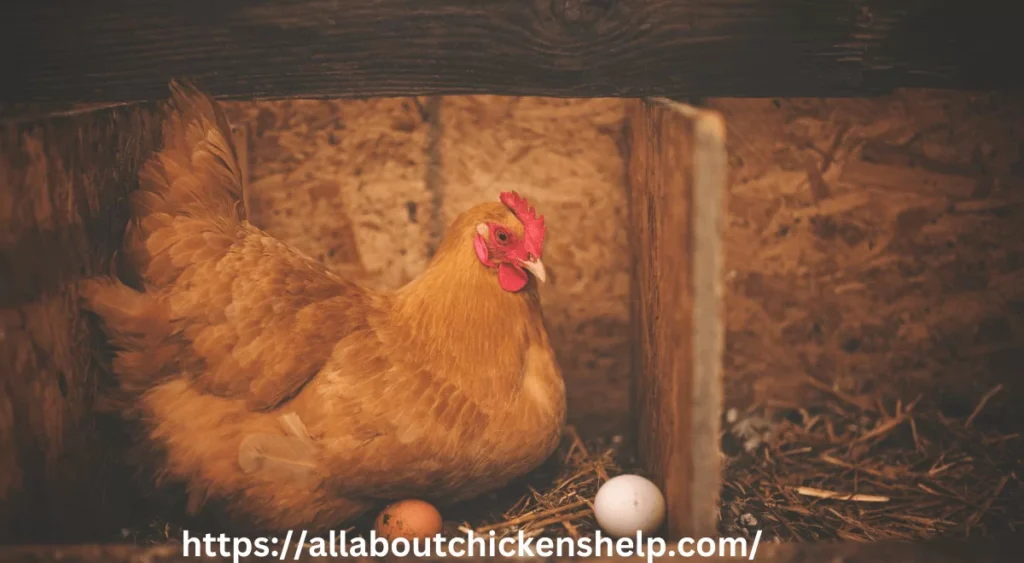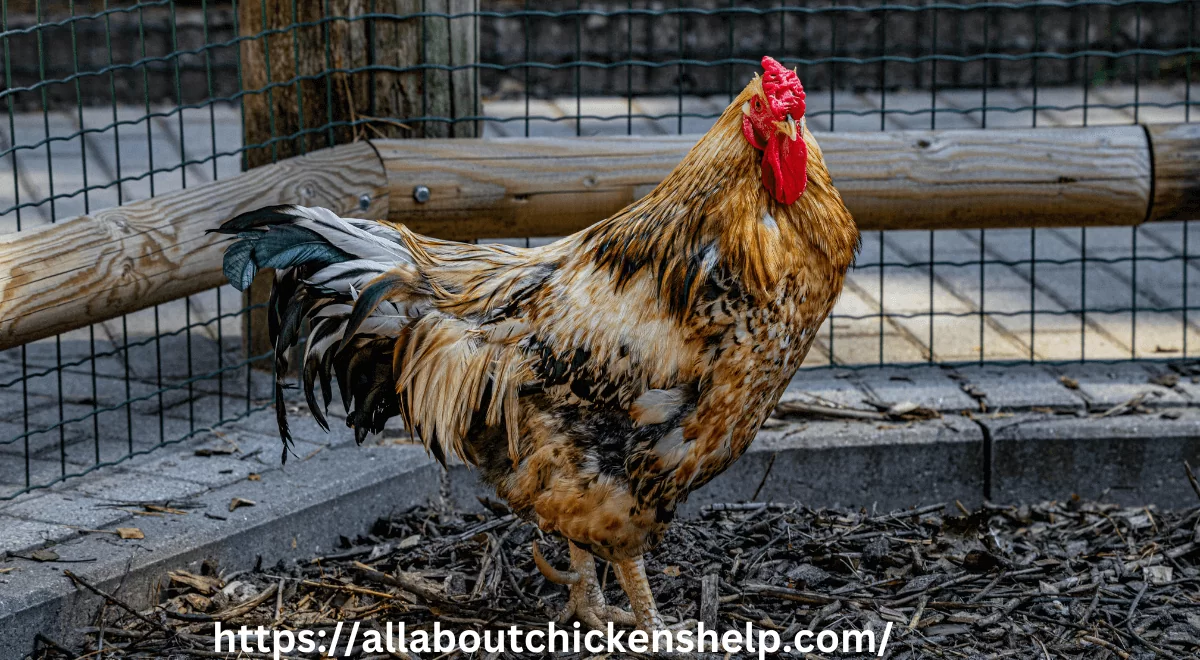Last Updated on 8 March 2024 by Anthony
When it comes to backyard poultry, the charming and diminutive Bantam chickens steal the show. These small-sized birds pack a punch with their personality, feathered flair, and manageable size. In this blog, we’ll delve into the world of Bantam chickens, an avid backyard chicken keeper who has turned his small urban space into a haven for these delightful feathered friends.
Overview :
- Lifespan: 5 to 8 years, depending on their care, health, and environment.
- Weight: 1 to 2 pounds on average(size may vary), they are small sized birds.
- Key features: include different feather types, comb shapes (single, rose, or pea-shaped), leg colors (from yellow to slate blue)
- Egg Production: around 2 to 3 small eggs per week.
- Good for Beginners: Yes
- Recommended Coop Size: 2 to 4 square feet per bird
- Price: few dollars to 50 $ Bantam prices vary based on the breed, rarity, and local availability.
History of the Bantam Chickens Breed
Bantam chickens, those delightful miniatures of the poultry world, have a fascinating history that spans continents and centuries. Let’s step back in time and explore their origins:
Origins in the Far East
It is believed that bantam chickens originated in the Far East, particularly in what is now recognized as Indonesia. These small birds caught the attention of European sailors who stopped at the seaport city of Bantan (now Bantam) for fresh supplies during their sea voyages.
European Introduction
In the 16th century, Dutch sailors brought these tiny chickens back to Europe. Their compact size made them ideal for long sea journeys, where they served as a valuable source of food.
The Name “Bantam”
The word “bantam” itself has an interesting etymology. It derives from the name of the seaport city of Bantam in western Java, Indonesia.
Charming Characteristics
Bantams quickly won hearts with their endearing personalities, colorful plumage, and delightful clucks. Despite their diminutive stature, they became beloved companions in backyard flocks.
Legacy Continues
Today, bantam chickens come in over 400 varieties, each with its unique charm. From the feathery Silkies to the regal Sebrights, these mini marvels continue to enchant chicken keepers worldwide.

Types of Bantam Chickens:
True Bantams:
True bantam chickens are breeds that are entirely unique and occur naturally, meaning they have no larger counterparts in the poultry world. These bantams have been around for centuries and are often prized for their small size and distinctive characteristics. Examples of true bantam breeds include the Nankin, Sebright, and Rosecomb. These breeds have evolved naturally over time and showcase a wide range of colors, feather patterns, and comb types.
Miniaturized Bantams:
Miniaturized bantam chickens are breeds that have been created by selectively breeding standard-sized chicken breeds to produce smaller versions. These bantams are not naturally occurring but are the result of human intervention to miniaturize popular standard breeds such as Rhode Island Reds, Cochins, or Orpingtons. Miniaturized bantams retain many of the characteristics of their larger counterparts but are typically smaller in size. They are often bred for their ornamental value and can be found in a variety of colors and feather patterns.
Developed Bantams:
Developed bantam chickens are breeds that have been further refined and developed through human intervention. While they may have originally started as true bantams or miniaturized breeds, they have undergone selective breeding to enhance certain traits or characteristics. Breeds like the Belgian, Pekin (Cochin), and Japanese fall into this category. For example, the Barbu d’Uccle is both a true bantam and a developed breed, with distinct features such as feathered legs and a beard. Developed bantams often exhibit a wide range of colors, patterns, and temperaments, making them popular choices for backyard poultry enthusiasts looking for unique and visually appealing breeds.
Why Bantams?
Compact Size
Bantams are the bonsai trees of the chicken world. Their petite frames fit snugly into even the tiniest of urban backyards. The cozy coop, nestled between the tomato vines and basil bushes, houses a colorful assortment of bantams. From the feathery Silkies to the regal Sebrights, each bird struts its stuff in a space-efficient manner.
Egg-cellent Personalities
Despite their small size, bantam chickens have big personalities. Their soft feathers, curious eyes, and cheerful clucking, they bring a calming vibe to any backyard. And don’t underestimate their eggs—they may be small, but they’re bursting with flavor and sunshine.

Feathered Fashionistas
Bantam chickens dress to impress! Their feathers can be fluffy or sleek, and they come in a different colors. With their speckled feathers and graceful demeanor, it’s impossible not to adore them.
Backyard Setup
Coop Design
When designing a coop for Bantam chickens, consider the following key points:
Ventilation: Ensure proper ventilation without creating drafts. Good airflow keeps the coop fresh and prevents health issues. Ventilation should not equal a draught, as that can make chickens sick.
Floor Space: Bantams need 2 square feet per bird in the coop where they roost (sleep). Additionally, provide slightly more space in the run (about 4 square feet per bird).
Roosting Space: Allocate 6-8 inches of roosting width space (wing to wing) for each bantam. During winter, they huddle up for warmth, and during summer, they spread out to stay cool.
Compatibility with Standard Chickens: Bantams can live with standard-sized chickens. Maintain a good male-to-female ratio (around 1 male per 8 hens) to avoid aggressive behaviors.
Sturdy Design: Invest in a well-built coop. Look for features like proper roofing, secure doors, and durable materials. Avoid wasting money on flimsy coops that won’t last.
Care for Bantams:
Bantams generally require similar care to standard breeds. However, due to their smaller size, they have a higher metabolic rate and may feel colder than larger hens.
Housing should be dry and draft-proof. While large fowl need 4 square feet of coop space and 8 square feet of run per bird, bantams require slightly less space (around 2 square feet in the coop and 4 square feet in the run).
Some bantam breeds, like Japanese and Dutch bantams, are less cold-tolerant.
Ideal food options for feeding bantam chickens:
When it comes to feeding bantam chickens, a balanced diet is essential for their health and well-being. Here are some ideal food options available in your backyard.
| Food Option | Description |
|---|---|
| Commercial Poultry Feed | Specifically formulated feed for bantam chickens, providing essential nutrients and protein. |
| Grains (e.g., corn, wheat, barley, oats) | Grains offer energy and satisfy natural foraging instincts. |
| Fresh Fruits and Vegetables | Includes leafy greens, carrots, apples, berries, providing vitamins, minerals, and antioxidants. |
| Mealworms or Insects | Live insects such as mealworms, earthworms, or other insects provide protein and satisfy natural foraging behavior. |
| Calcium Supplements (e.g., crushed oyster shells) | Supports eggshell formation and prevents calcium deficiency in laying hens. |
| Grit | Provides insoluble grit like crushed granite or oyster shells to aid digestion in the gizzard. |
| Clean, Fresh Water | Essential for hydration, digestion, and overall health. |
These food options, when provided as part of a balanced diet, help ensure the health and well-being of bantam chicken. Adjust their feed quantity based on their size and activity level.

Egg Production and Broodiness:
Bantam eggs are smaller than standard eggs, roughly half the size. When using them in cooking, consider the ratio of 3 bantam eggs to 2 standard eggs.
Bantams sometimes get a bad reputation for laying, but they make up for it with their unique personalities and charm.
Breeding Bantam Chickens:
| Step | Description |
|---|---|
| Select Healthy Parent Birds: | Choose strong, disease-free bantams with desirable traits such as good temperament, conformation, and productivity. Avoid breeding birds with any signs of illness, deformities, or genetic defects. Conduct regular health checks and vaccinations to ensure the parent birds are in optimal condition for breeding. |
| Create a Suitable Breeding Environment: | Provide a suitable breeding environment conducive to natural mating and egg-laying. Ensure the coop or breeding pen is spacious, well-ventilated, and predator-proof. Include nesting boxes filled with clean bedding material such as straw or shavings for egg-laying. Monitor the ratio of hens to roosters to prevent overbreeding and minimize aggression among males. |
| Monitor Mating Behavior: | Observe the mating behavior of the bantam chickens to ensure successful fertilization. Roosters will typically display courting behavior, including vocalizations, strutting, and mounting the hens. Ensure adequate privacy and space for mating to occur naturally. If needed, introduce additional roosters to improve fertility rates. |
| Collect and Incubate Eggs: | Collect eggs laid by the hens promptly to prevent damage or breakage. Store the eggs in a cool, dry environment with consistent temperature and humidity levels until ready for incubation. Use a reliable egg incubator to hatch the eggs, following the manufacturer’s instructions for optimal settings and turning frequency. Monitor the incubator closely for signs of temperature fluctuations or humidity imbalances. |
| Care for the Chicks: | Once the chicks hatch, transfer them to a warm and secure brooding area equipped with a heat source such as a brooder lamp or heating pad. Provide clean bedding material, fresh water, and chick starter feed formulated specifically for young chicks. Monitor the temperature in the brooder to ensure it remains within the recommended range for the chicks’ age. Gradually introduce the chicks to solid food and encourage natural behaviors such as scratching and pecking. Maintain a clean and hygienic environment to minimize the risk of disease and promote healthy growth and development. |
| Monitor Growth and Development: | Monitor the growth and development of the bantam chicks closely, keeping track of their weight, feathering, and overall health. Provide regular veterinary check-ups and vaccinations to prevent common poultry diseases and parasites. Separate the chicks by sex as they mature to prevent unwanted breeding and aggression among males. |
By following these steps and providing proper care and attention to both the parent birds and chicks, you can successfully breed and raise healthy bantam chickens in your backyard.
Social Interaction
Allow for socialization within the flock to prevent stress and promote natural behavior.
Health and Hygiene
Implement regular parasite control and vaccination schedules.
Conclusion
So, whether you’re a seasoned chicken keeper or a curious beginner, consider adding a touch of bantam magic to your backyard. Their story reminds us that sometimes, the smallest things bring the greatest joy.
Frequently Asked Questions:
What are bantam chickens good for?
Bantam chickens are valued for their:
Eggs: Despite their small size, they lay flavorful eggs.
Ornamental Beauty: Their diverse colors and patterns make them visually appealing.
Companionship: Friendly personalities make them great pets.
Broodiness: Many breeds are excellent mothers, hatching and raising chicks.
Pest Control: Natural foragers, they help control insect populations.
Education: They offer learning opportunities for children and adults alike.
Do bantam chickens lay eggs?
Yes, Bantam eggs are smaller than standard eggs, roughly half the size. When using them in cooking, consider the ratio of 3 bantam eggs to 2 standard eggs.
Why is it called bantam?
The term “bantam” originates from the Indonesian city of Bantam, known for its small chickens.
What is the difference between a bantam chicken and a regular chicken?
Bantam chickens are smaller in size compared to regular chickens. They often have more ornamental features but can still lay eggs and exhibit friendly personalities.
Are bantams better than chickens?
Whether bantams are better than standard chickens depends on individual preferences and needs. Bantams are smaller and more ornamental, while standard chickens may lay larger eggs and have higher meat yields.
Can I mix bantams with chickens?
Yes, you can mix bantams with standard chickens in the same flock, but not recommended monitor for any aggression due to size differences.
How long do bantams live?
On average, bantam chickens can live between 5 to 8 years, depending on various factors such as genetics, diet, living conditions, and healthcare.
Do bantams lay in winter?
Yes, bantam chickens can lay eggs in winter, but their egg production may decrease due to shorter daylight hours and colder temperatures.
Are bantams noisy?
Bantam chickens are generally quieter compared to larger breeds.
Can you eat bantam eggs?
Yes, When using them in cooking, consider the ratio of 3 bantam eggs to 2 standard eggs


